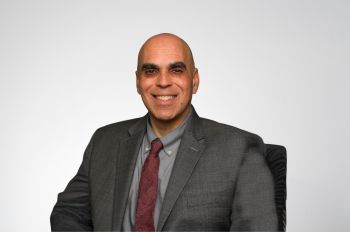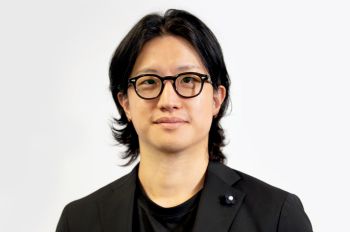Twelve Undergraduates Participating in the Summer 2018 Armour R&D Program
Twelve Armour College of Engineering undergraduate students and their faculty mentors have been awarded Summer 2018 Armour R&D Fellowships. The program, an Armour College of Engineering Distinctive Education initiative, offers undergraduate engineering students the opportunity to gain hands-on research and development experience in the lab of a faculty mentor.
Eleven students funded during the summer term will begin projects for the first time, while one participant will build on research they started during prior semesters. Students have been selected to participate in the program based on the quality of project proposals submitted. The proposals are reviewed and selected by Natacha DePaola, Carol and Ed Kaplan Armour College Dean of Engineering, and the Distinctive Education Council.
Armour R&D will run for ten weeks, culminating with the Summer 2018 Armour R&D Expo to be held on July 12, 2018. During the Expo, students will share the results of their work through poster presentations.
The Summer 2018 Armour R&D projects are categorized under three of the four IIT Engineering Themes: Water, Health, Energy, and Security. These themes represent areas in which engineers can create solutions of global impact that advance society.
HEALTH
Nanjeeba Chowdhury (BME, 1st Year) Kenneth Tichauer, Assistant Professor of Biomedical Engineering, and Jennifer Kang-Mieler, Associate Professor of Biomedical Engineering will work on the project, Optimization of blood flow mapping in the retina by fitting mathematical models to fluorescein videoangiography data. By today's treatment standards, diabetic retinopathy can only be diagnosed at the stage where its effects on the retina are irreversible. The aim for this project is to use MATLAB to develop a mathematical model that can allow the microvascular volumetric blood flow in the retina to be measured quantitatively. If this can be successfully incorporated into annual checkups or prescribed as needed, it will make it possible to tell how much a person's blood flow skews from the healthy range. By diagnosing diabetic retinopathy at an earlier stage, it will allow for better management of its effect on people's vision.
Jodi Curtin (BME, 2nd Year) and Kenneth Tichauer, Assistant Professor of Biomedical Engineering, will start on their project, Developing noninvasive methods to determine the metastasis of breast cancer using optical molecular imaging. The purpose of this project is to replace the current antibody based control imaging agent being used in Dr. Tichauer's lab with an FDA-approved fluorophore: indocyanine green (ICG). They will be validating the measurements of the metastasis as the cancer cells grow for six weeks in 20 athymic rats with the new, more clinically applicable, paired-agent imaging protocol using PCR procedures. This research will further the adoption of this method for clinical use. I will also assist in imaging agent labeling, cancer animal modeling, data collection/imaging, and data analysis.
Thao Dang (BME, 4th Year) and Abhinav Bhushan, Assistant Professor of Biomedical Engineering, will start to work on their project, Understanding Neurodegeneration Through the Crosstalk Between Gut Cells and Microglial Cells. Studies have shown that a person's gut is highly influential on how neurons behave and may even induce neurodegeneration that leads to diseases like Alzheimer's and Parkinson's Disease. This team will be studying how microglial cells are affected by gut cells and gut bacteria by performing an in-vitro co-culture. It is predicted that the metabolites produced by either the gut cells or bacteria cells will induce morphological and functional changes in the microglial culture. From here, preventative methods like diet, will be better understood and can be used to combat the development of neurodegenerative diseases.
Sophie Grossman (BME, 4th Year) and Georgia Papavisiliou, Assistant Professor of Biomedical Engineering, will start work on their project, The Role of Gradients of Affinity Bound Growth Factors on Neovascularization. Vascular Endothelial growth factor (VEGF) is the key biological signal used within the body to stimulate new blood vessel formation. Therefore, a VEGF gradient can be implemented into a hydrogel scaffold to induce and control neovascularization. However, VEGF alone diffuses extremely quickly and travels outside the scaffold so Heprin Mimetic peptide (HMP) is used to retain the growth factor within the scaffold due to its strong affinity to VEGF and help promote blood vessel formation. Grossman's role in the overall research is to polymerize the HMP, form the hydogel scaffolds, observe the release profile via fluorescent imaging and determine the optimal concentration of HMP to be used for future research. If successful, this biomaterial strategy has potential to deliver sustained and controlled delivery of growth factor to aid in stimulating blood vessel formation within a scaffold.
Tung Nguyen (BME, 3rd Year) and Abhinav Bhushan, Assistant Professor of Biomedical Engineering, will work on the project, A microfluidic platform for control of immune cells for adoptive cell transfer therapy. The project's aim is to develop a quality control for T-cells therapy aiming at CAR T-cells specifically. Nguyen's role within the project is to investigate whether or not there is a difference in mechanical and electrical properties between inactivated and activated CAR-T cells. If such finding is confirmed, he would move on to develop a sorting system utilizing microfluidic devices that is able to measure those properties in a single cell level. One of the immediate applications would be for a company involved in CAR-T cells research to integrate such system as a part of their quality control process. Another application of the research would be to introduce the sorting platform for other type of cells, not just CAR-T cells for any future research or applications
ENERGY
Hammad Ahmed (CE, 1st Year) and Laurence Rohter, Adjunct Faculty, will begin their project Virtual Reality Modeling. The project will model Crown Hall building in to virtual reality to show features which are typically overlooked. The whole project is designed to optimize the energy usage of the building and to make virtual reality easily accessible.
Elizabeth Klimek (ME, 1st Year) and Aleksander Ostrogorsky, Professor of Mechanical & Materials Engineering, will begin their project, Numerical Simulation of Diffusion in Capillaries on Earth and in Microgravity. This project will analyze diffusion coefficients of various impurities in molten Germanium and Silicon for more efficient semiconductor manufacturing. Since diffusion is sensitive to minute degrees of natural convection, microgravity is the most efficient, inexpensive way to create semiconductor crystals. We must simulate and evaluate diffusion coefficients in a controlled environment on Earth before testing it in microgravity at NASA's International Space Station. Klimek will examine the effect of changing the capillary diameter and length, diffusion time, and magnetic field strength to vary the level of gravitational acceleration which will promote the advancement of fabricating semiconductors, enhance manufacturing procedures, and create better crystals for smaller, more powerful devices.
Chris Riley (ME, 5th year) and Brent Stephens, Associate Professor of Architectural Engineering Director of Architectural Engineering, will continue their project, Saving Energy and Increasing Occupant Comfort using Dynamic Shading in Buildings. The team seeks to develop and test an inexpensive dynamic shading system that reduces excessive solar heat gains and improves thermal comfort of people within an indoor environment. The system will be controlled by both environmental sensors and by the user via periodic inquires of their thermal comfort. This project could increase user comfort and reduce the cost to maintain optimal temperature within and indoor environment.
Stoyan Stoyanov (ME, 4th Year), Julia Briden (ME, 3rd Year), and Francisco Ruiz, Associate Professor of Mechanical & Aerospace Engineering, will begin their project, Adaptive-Cycle Hybrid Engine. The adaptive-cycle engine provides a promising solution to the problem of improving efficiency of old combustion engine systems. A higher efficiency means less fuel consumption and lower atmospheric emissions. 'Adaptive-cycle' refers to the type of thermodynamic cycle used to power the engine, where compression events are detached from expansion events through the use of a computer. Previous IIT research studies have used simulation software to determine the ideal conditions in which a six-stroke version of the adaptive-cycle engine will run the most efficiently, as well as verified a significant increase in thermal efficiency, compared to the standard four-stroke engine. This study will build on previous research to decrease COx emissions through increasing the thermal efficiency of combustion engines. To achieve the goals of this study, I will work towards designing and manufacturing a working prototype of the gasoline-fueled adaptive-cycle hybrid engine. The future potential of this work is a renaissance in the way conventional combustion engines are run, affecting all realms of the energy spectrum.
Madalyn Urig (ME, 2nd year) and Kevin Cassel, Professor of Mechanical & Aerospace Engineering and Professor Applied Mathematics, will start their project, Vortexes in Wind Energy. Urig will be looking at the effect of vortexes on wind turbine power generation. This will start with designing an apparatus to produce vortexes and comparing power generation results to a regular turbine datum using Computation Fluid Dynamics software. Urig will be designing the apparatus and running the simulations with the aide of Professor Cassel in learning the software and helping with analysis. Future applications of this research will be very prevalent in the world of renewable energy; if vortex formation is proved to be advantageous in environments where wind turbines currently cannot operate, this will be revolutionary in design and fabrication of wind turbines.
Security
Laura Prout (ME, 2nd Year) and Matthew Spenko, Associate Professor of Mechanical Engineering, will begin their project, Evaluating Navigation Integrity of Autonomous Passenger Vehicles from 3D Point Cloud Data. This project will be a part of the current research in IIT's Robotics Lab on determining navigation integrity, a measurement that tells us how much we can trust information from sensors on self-driving cars. Prout's role in this project is to create multiple visualizations and maps of 3D data collected from external sensors to illustrate the risk associated with the car's location. The project aims to ensure the safety of passengers and non-participating humans such as pedestrians, and achieving clear visualizations of their data associated with integrity will help them to communicate these results and increase the overall impact of guaranteeing that self-driving cars will be safe for humans.




